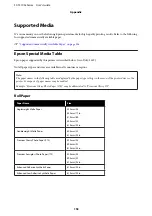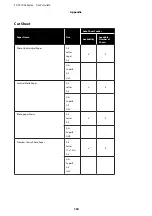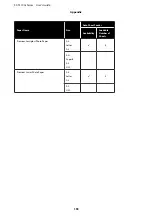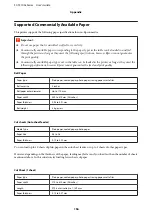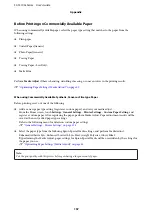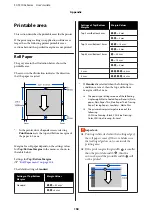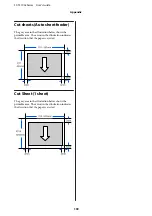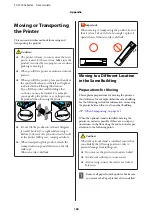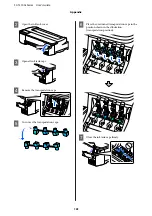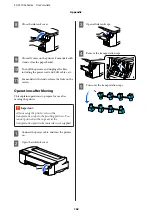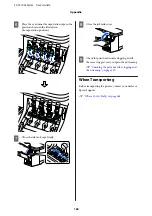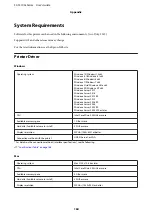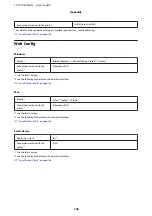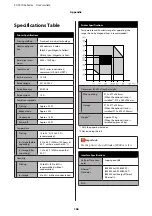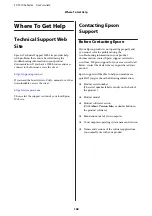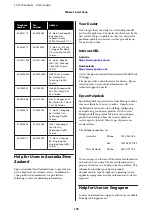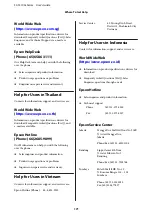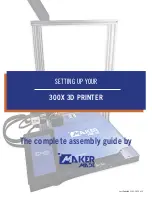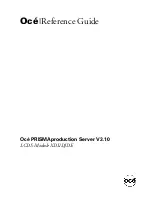
Interface Specifications
Standards
IEEE802.11b/g/n
*3
Frequency Range
2.4 GHz
Coordination
Modes
Infrastructure
Wi-Fi Direct (Simple AP)
*4
Wireless Securities
WEP (64/128bit)
WPA-PSK (TKIP)
WPA2-PSK (AES)
*5
WPA3-SAE
WPA2-Enterprise (AES)
WPA3-Enterprise
*6
Network Printing
Protocols/Func-
tions
*7
EpsonNet Print (Windows)
Standard TCP/IP (Windows)
WSD Printing (Windows)
Bonjour Printing (Mac)
IPP Printing (Mac)
AirPrint (iOS, Mac)
Printing from FTP client
Security Protocols
SSL/TLS (HTTPS Server/Client,
IPPS)
IEEE802.1X
IPsec/IP Filtering
SMTPS (STARTTLS, SSL/TLS)
SNMPv3
*1 Use a category 5 or higher STP (Shielded twisted pair) cable.
*2 The connected device should comply with IEEE802.3az
standards.
*3 IEEE802.11n is only available for the HT20.
*4 Not supported for IEEE 802.11b.
*5 Complies with WPA2 standards with support for WPA/
WPA2 Personal.
*6 192-bit security is not supported.
*7 EpsonNet Print supports IPv4 only. The others support
both IPv4 and IPv6.
Warning:
To prevent radio interference to the licensed
service, this device is intended to be operated
indoors and away from windows to provide
maximum shielding. Equipment (or its transmit
antenna) that is installed outdoors is subject to
licensing
Ink Specifications
Type
Dedicated ink bottles
Ink
Pigment ink: Black
Dye ink: Cyan, Magenta, Yellow
Storage temperature
Uninstalled
-20 to 40°C (Within four days at
-20 °C, within a month at 40 °C)
Transporting
-20 to 60°C (Within four days at
-20 °C, within a month at 40 °C,
within 72 hours at 60 °C)
Capacity
140 ml
c
Important:
The ink freezes if left in the ink bottles at below
-15 °C for a long time. If it does freeze, leave it at
room temperature (25°C) for at least two hours.
For European users
Radio Equipment Information
This product intentionally emit radio wave described
as follows.
(a) frequency band in which the radio equipment
operates; 2.4 to 2.4835 GHz
(b) maximum radio-frequency power transmitted in
the frequency band in which the radio equipment
operates; 20 dBm (eirp power)
SC-T3100x Series User's Guide
Appendix
167

